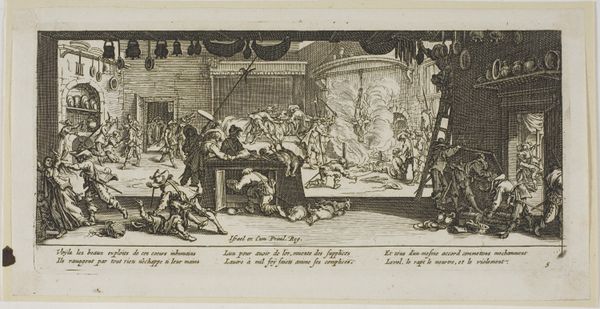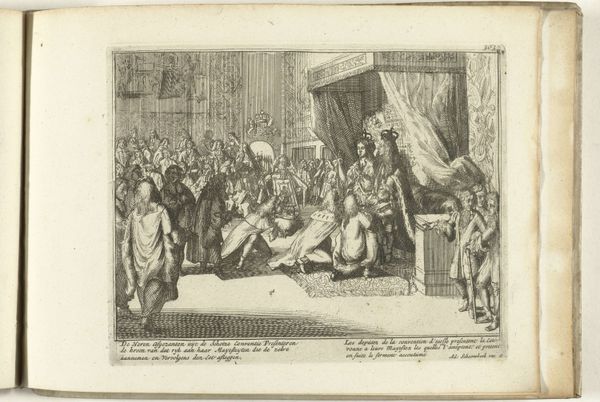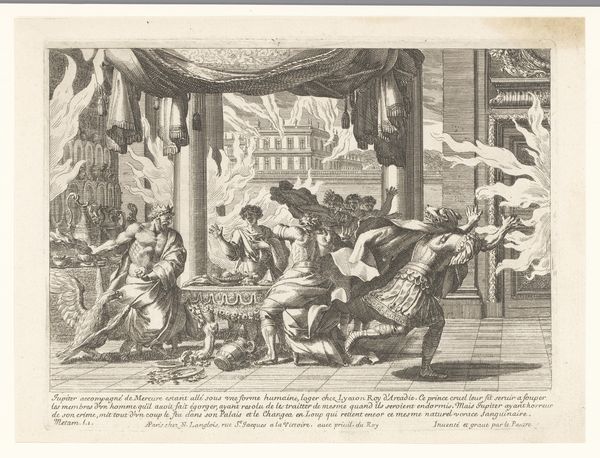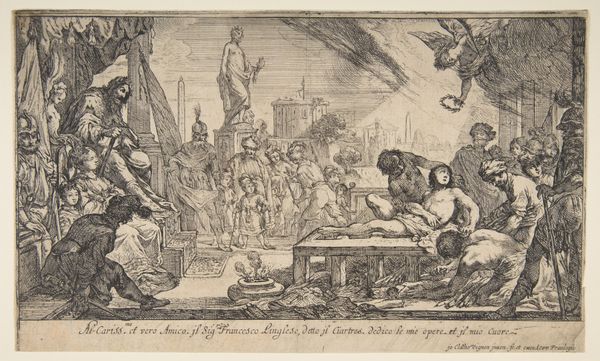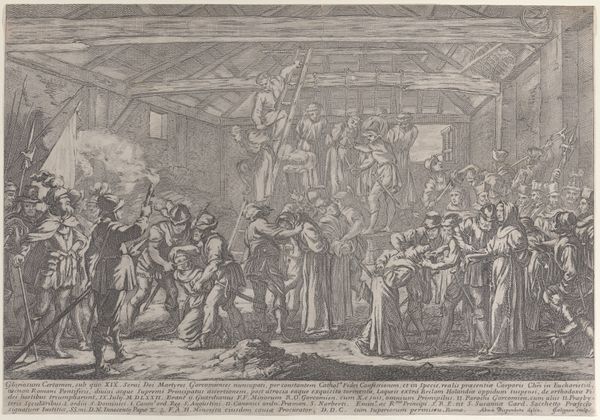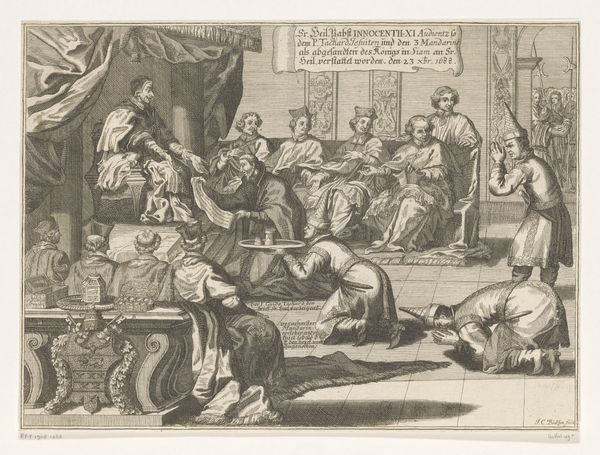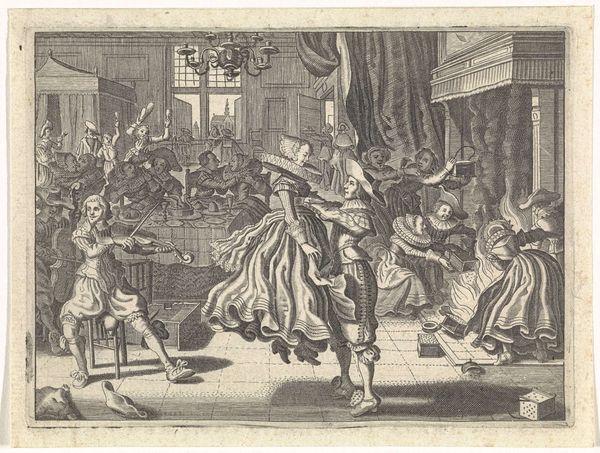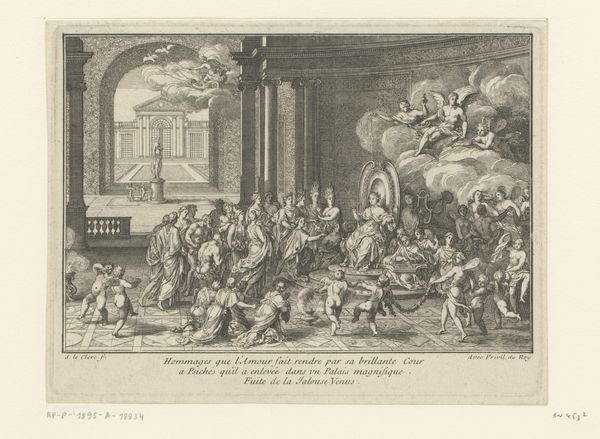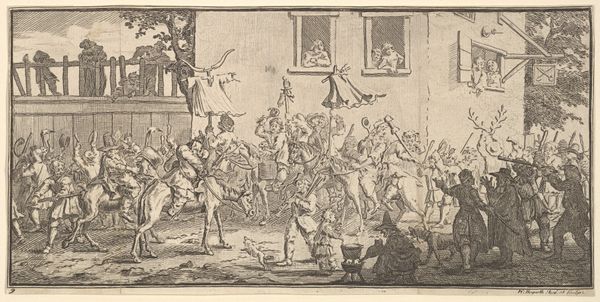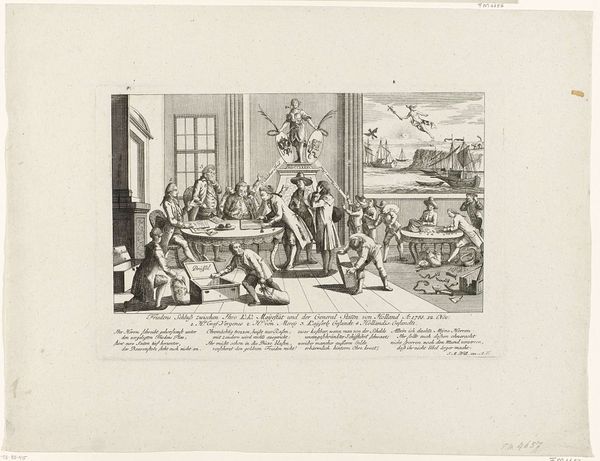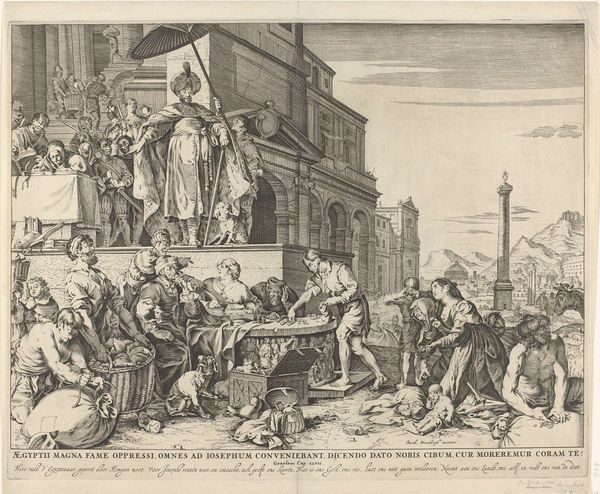
print, engraving
#
narrative-art
#
baroque
# print
#
line
#
history-painting
#
engraving
Dimensions: 83 mm (height) x 188 mm (width) (plademaal)
Editor: This is "En gård plyndres," or "A Farm is Plundered," an engraving by Jacques Callot from 1633. It feels chaotic and brutal. What do you see in this piece? Curator: It's a window into the turmoil of its time. See how Callot uses line and shadow to depict violence. Consider this print not just as a historical record but as a symbolic representation of the horrors of war. What do the burning structures evoke for you? Editor: Devastation, clearly, and maybe religious conflict. The figures are so small, yet the scene is packed with detail. What kind of history is it depicting? Curator: Likely alluding to the Thirty Years' War, or similar conflicts occurring across 17th-century Europe. These small figures become emblematic of larger societal fractures. Look at how the image is composed to move the viewer through different zones of chaos, all ultimately converging in the background fire. Editor: The figures do seem to be running in many different directions! It is a complicated space to traverse. The ladders leaning towards the structure imply that people might be saved, even while ruin is taking place? Curator: It suggests the fragile duality inherent in moments of crisis. While destruction rages, hope, or at least the possibility of escape, is not entirely extinguished. That small glimmer of hope coexisting with cruelty speaks volumes about humanity. What stays with you most? Editor: Definitely how even something seemingly distant, rendered in lines on a page, can carry so much raw emotional and symbolic weight about conflict. Curator: Indeed. Art becomes a vessel for cultural memory, allowing us to confront and perhaps even understand the shadows of our past.
Comments
No comments
Be the first to comment and join the conversation on the ultimate creative platform.
